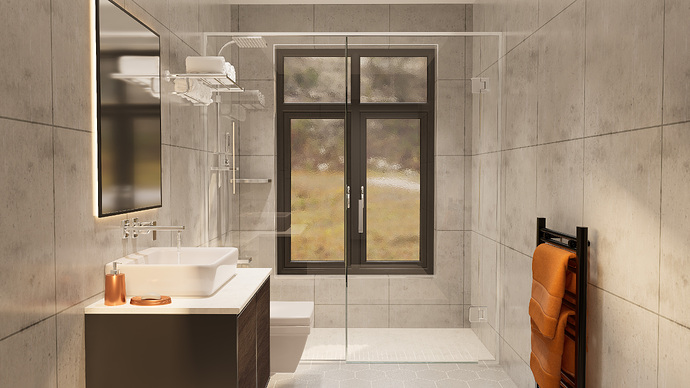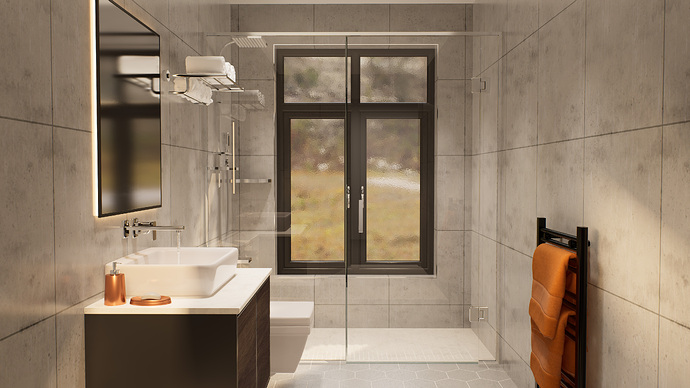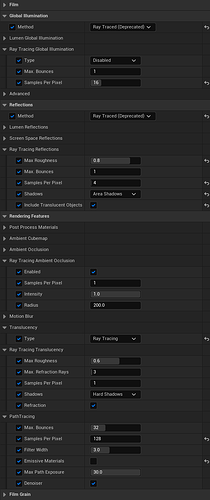There seems to be a few issues between rendering an image and rendering a video, even if they’re both the same resolution, aspect ratio and format (png). From what I can gather, the core of these issues seem to stem from video rendering being given less ‘bounces’ compared to it’s image rendering counterpart. For me, this is mostly seen in the overall change in brightness, as well as the amount of black reflections you get in video rendering compared to image rendering.
Example -
Image VS Video - Default Mirror Material - 0.1 Roughness
D5_Image_Default Mirror (Rough 0.1) is an image render with the default mirror material set to 0.1 roughness and applied to both the mirror and all the chrome furnishings. Apart from the reflection of the towel shelf in the shower glass being solid black, the reflections are fine overall.
D5_Video_Default Mirror (Rough 0.1) is the first frame of a video render with the default mirror material set to 0.1 roughness and applied to both the mirror and all the chrome furnishings. The image is visibly darker and the reflections of the towel shelf and the window handles are now all black in the mirror and the shower glass, there’s also plenty of other more subtle things not reflecting well as there’s a lot more black reflections in the faucet, shower shelving etc.
I love the simplicity of D5 Render, but it would still be fantastic if you could add an option to make video rendering match the same render settings (bounces etc) as image rendering. Better yet, it’d be great if there was a widget for users to enable that allowed them to dial those settings in even further. Nothing too complicated, but just a simple slider that allows us to add extra bounces to the baked in RT/GI render settings, similar to what you could do in Unreal Engine.


